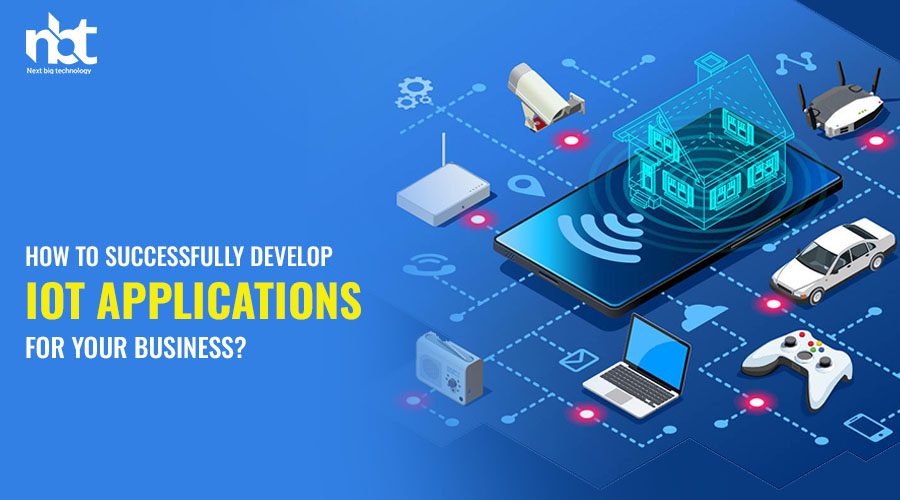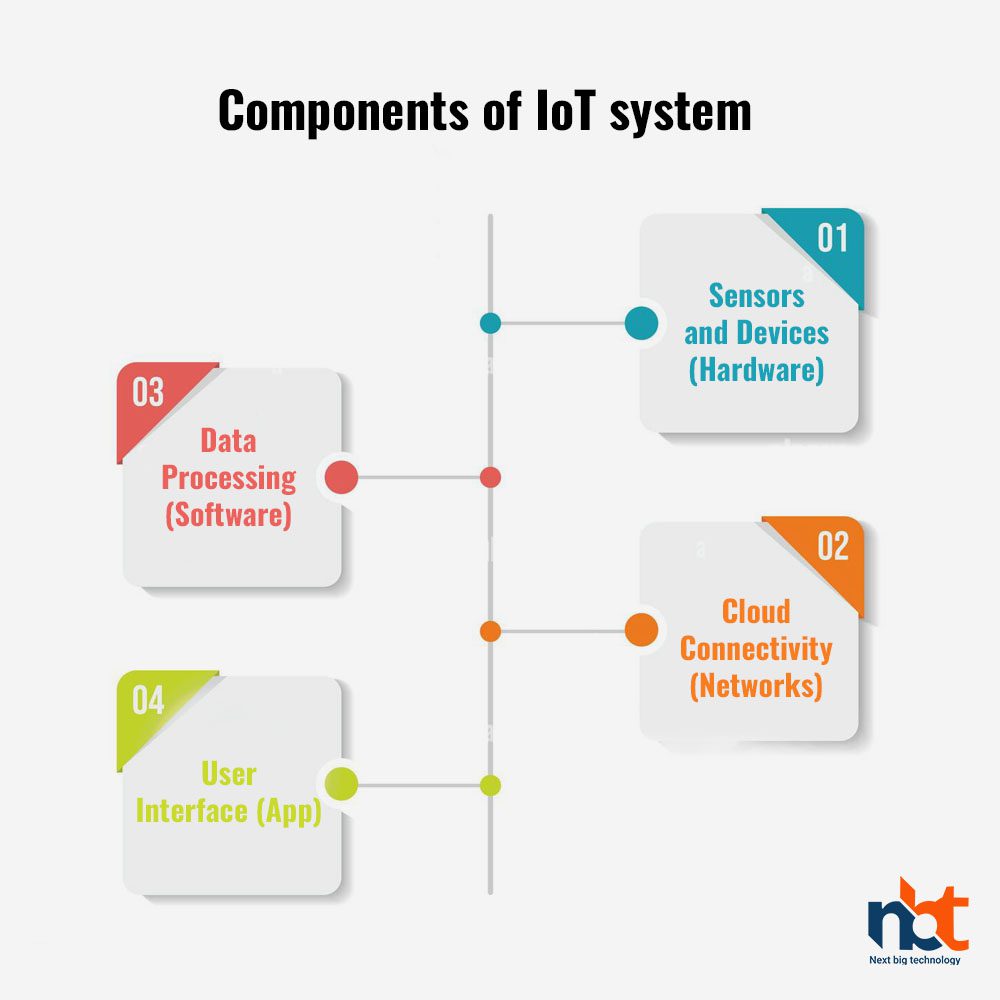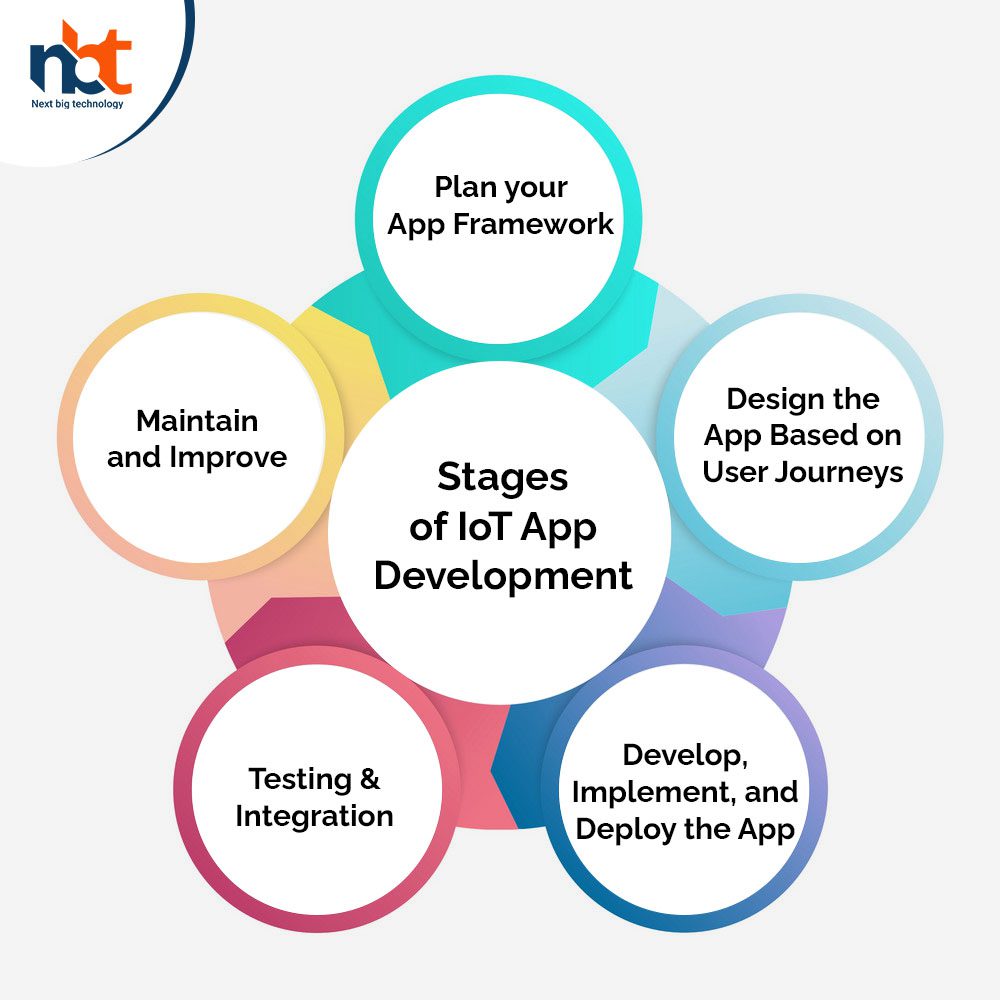IoT applications are continuously changing the way we function by relieving us from doing both simple and complicated tasks. But building these applications could make the lives of consumers better in the form of wearable band tracking, smart home, etc. In other words, the Internet of Things is equipped with software, sensors, and other technologies along with the ability to connect and exchange data with other systems and devices via the internet and other similar networks. IoT technology creates a great impact on individuals, businesses, and society.
Table of Contents
Components of IoT system
1. Sensors and Devices (Hardware)
Input devices and sensors are the major components of IoT systems. Sensors collect relevant data like video/audio feed and temperature while a device has a group of sensors that collect and share data nearby.
2. Cloud Connectivity (Networks)
Once the data has been collected, the best app development company in India could share it with the cloud infrastructure and store it. For this, they use data transport networks like satellite, Wi-Fi, cellular, WAN, etc. Every network has different benefits like efficient power consumption or increased bandwidth allowance.
3. Data Processing (Software)
Once the data reaches the cloud, it is processed by a software program, to collate the data, analyze it, and prepare it into a useful pattern. For instance, a smart heater at your home will gather data on temperature, transfer it to the cloud, and allow the software to measure the temperature. Then, the data is forwarded to the user or used to control the heater.
Also read : How Much Does It Cost to Develop An IoT App?
4. User Interface (App)
Once the data has been processed by the analytic engine, it is synced with a user interface like a mobile app. A user dashboard will allow people to see the data. Also, the app can notify people when a certain amount of data is collected.
Factors to Consider During Development
Several factors determine the success of your IoT application including the following:
1. Plug Security Gaps
IoT systems lack common security protocols. It leaves IoT systems wide open to hacking and cyber-attacks like DDoS attacks. The best way to prevent hackers and cybercriminals from exploiting the inherent liability of IoT is to build apps that plug the gaps and protect data transfer. Today, most IoT application development experts are building communication layer security like TLS or DTLS into their apps.
2. AI Data Analysis
The basic workflow of an IoT system has several steps including creating, communicating, aggregating, analyzing, and acting. The sensors communicate via a network that is aggregated in the cloud. Later, data analysis can be enhanced with AI and machine learning technology that is performed by an IoT app.
3. Opportunities for Business
Investing in custom IoT application development creates several business opportunities including productivity optimization, enabling productive remote working, automation of business processes and services, improved data sharing across businesses, rapid response to changing situations and ultimately leads to cost reductions. IoT solutions grow efficiently and develop into a separate ecosystem, by managing different processes and workflows.
4. Create A Continuous User Experience
The development of a custom IoT app lets you embrace the agile methodology of Continuous User Experience (CUE). It involves getting data and information from anybody that uses your app. You can analyze this data and learn exactly how users interact with the data. This will improve and refine your app as per user queries and make it user-friendly. Your app optimization lets you build customer loyalty and get ahead of your competitors.
Stages of IoT App Development
Creating an app to include an IoT ecosystem requires design and planning. To create IoT applications, the best app development company in India should follow these steps:
1. Plan your App Framework
Initially, plan your app architecture, decide the required features, how the UX will work, how it will interface with the device system software and the process of transferring data between the app and the devices.
Also read : What Are the Top IoT Platforms in 2021? Read This
2. Design the App Based on User Journeys
At this stage, the next big technology web & app development company will design the app. In other words, you should plan for future security systems, and overloads, and design the app to align with user journeys. To define the user’s journey, you should do some research and later talk to the end-users and discover exactly what they want from an application.
The IoT app has a top-rated UI and UX. Generally, users get confused by a complicated interface and abandon it within the first few minutes. To achieve a good UI/UX, you must ensure that all the different sensor responses and various features and services are presented in a way that is intuitive and easy to use.
3. Develop, Implement, and Deploy the App
At this stage, the app development is based on the functional app and receives the exact interface with all the actionable menus, lists, and forms. The major challenges while creating the app are its correct merge with all the chosen IoT devices, third-party services integrations, and implementation of the security management system and security protocols. The team of IoT experts should ensure all the data is properly transferred and stored.
4. Testing & Integration
Once the app has been deployed, it needs to be tested fully to ensure the proper working of desired features and services. Various test cases should be applied and test data examined to make sure that users’ journeys go well. After completing the testing, you must integrate the app into the overall IoT system. It involves setting up the cloud gateways and networks for data transfer and meshing them with the communication layer security protocol of an application. Later, the data integrity and security are maintained throughout the system.
5. Maintain and Improve
The maintenance phase includes checking and adapting the software, system hardware, and technical specification to improve overall performance. Here, it is important to have a solid change control or change management process in place, to ensure that any app enhancements or modifications are done properly, without causing disruption or damage to the overall IoT system.
Thanks for reading our post “How to successfully develop IoT applications for your business? “, please connect with us for any further inquiry. We are Next Big Technology, a leading web & Mobile Application Development Company. We build high-quality applications to full fill all your business needs.






















